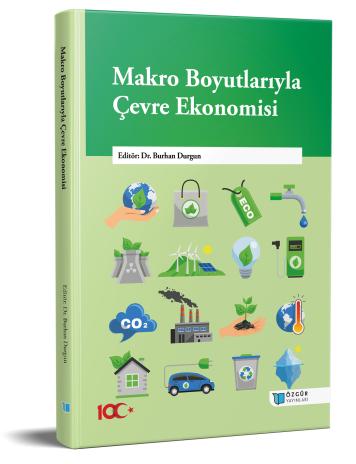
Ekonomik Büyüme ve Çevre Kirliliği: Türkiye için Bir Kuznets Eğrisi Analizi
Şu kitabın bölümü:
Durgun,
B.
(ed.)
2023.
Makro Boyutlarıyla Çevre Ekonomisi.
Özet
Sanayileşmenin artması, iklimsel değişiklikler, küreselleşme, kentleşme ve daha pek çok faktörün bir araya gelmesiyle çevre kalitesinin azalması, iktisat ve çevre bilimini yakınlaştırarak ekonomik faaliyetlerin çevre üzerindeki etkilerini ortaya koymak için yeni bir çalışma alanı oluşmasına neden olmuştur. Çevre kirliliği ve ekonomik faaliyetlerin birbiri üzerinde ne denli etkin olduğu, kalkınma iktisadı ile birlikte daha da dikkat çekmeye başlamıştır. Petrol, enerji, kömür gibi doğal kaynak kullanımındaki artışlar çevresel bozulmayı hızlandırmış, kalkınmanın sürdürülebilirliği konusunda endişeleri de beraberinde getirmiştir. Bu çalışmada Türkiye Ekonomisi için 1975-2018 dönemi yıllık verileri esas alınarak, ARDL Sınır Testi yardımı ile Çevresel Kuznets Eğrisi Hipotezinin geçerliliği, kuadratik form kullanılarak araştırılmıştır. Modelde ekolojik ayak izi ve kişi başına düşen GSYİH arasındaki ilişkiler ortaya konmaya çalışılmış; bulgulara göre uzun dönemde Y, Y2 değişkenleri ile ekolojik ayak izi arasında sırasıyla pozitif ve negatif ilişkiler tespit edilmiştir. Sonuçlar, Çevresel Kuznets Eğrisi hipotezini destekler niteliktedir. Ayrıca ARDL eş bütünleşme analizine ek olarak, bulguları güçlendirmek amacıyla Toda-Yamamoto nedensellik testi yapılmış ve ekonomik büyümeden çevre kirliliğine doğru tek yönlü bir nedensellik ilişkisi bulgulanmıştır.

